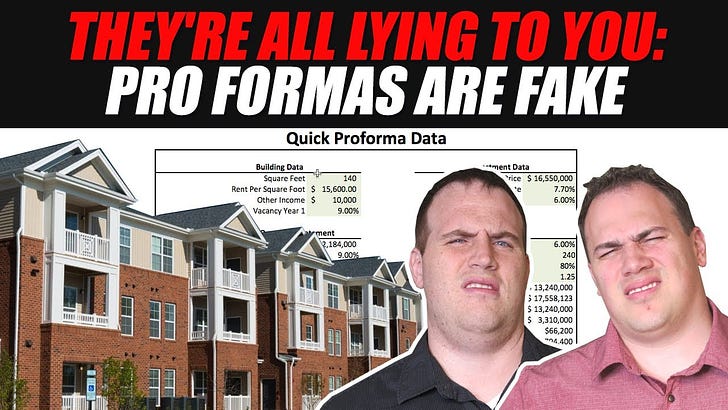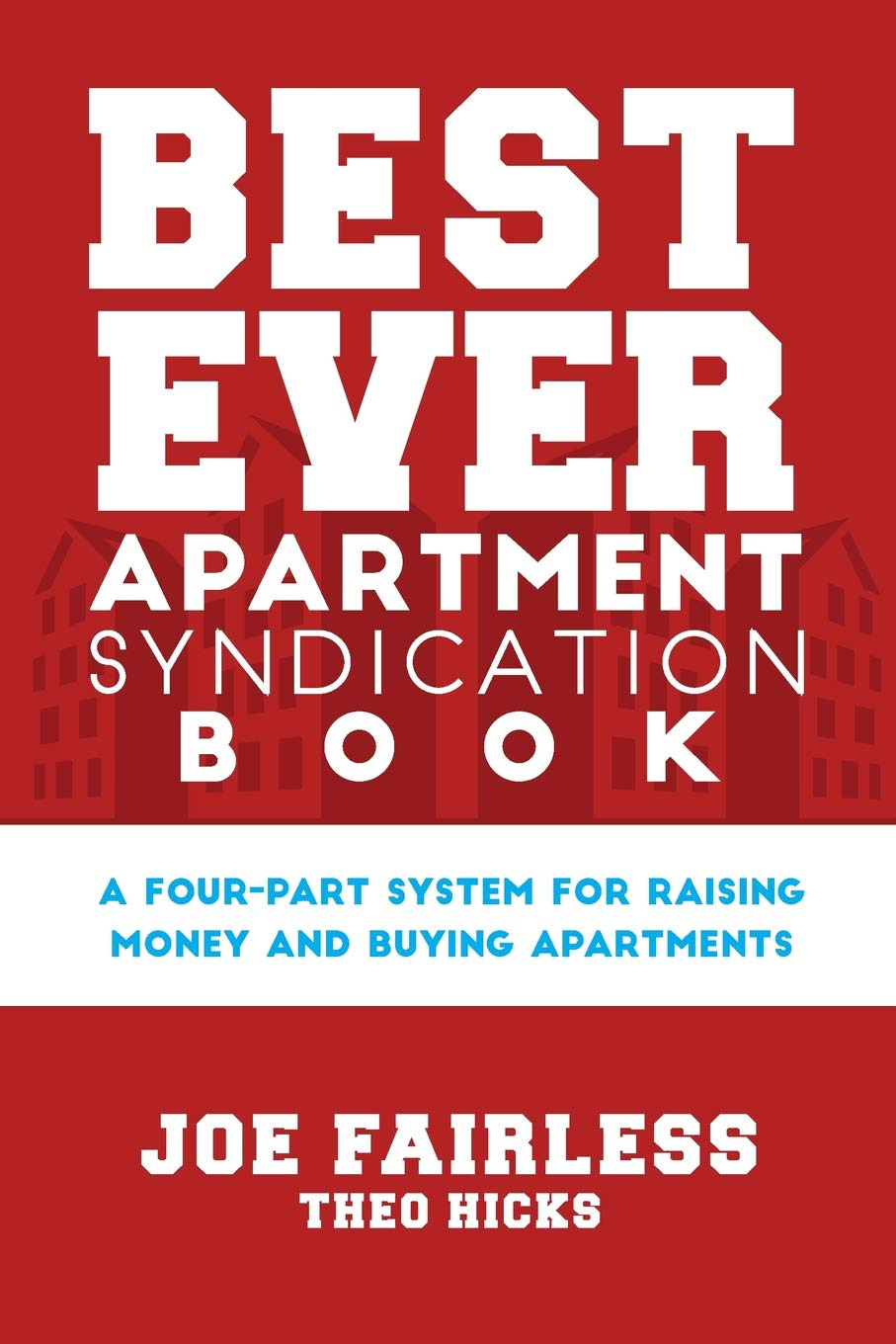“Buyers are liars… and sellers are liars too.”
- Some guy
The above is possibly the most important piece of advice anyone can get when negotiating. Sorry to break it to you, but you have to be a wee bit cynical when it comes to buyers… and sellers, which will be the topic of this article.
Of course, the lies are usually not overt. For the most part, they are quite subtle. And nowhere will you find such “lies” than in the seller-provided pro forma, particularly with regards to commercial real estate.
What is a Pro Forma?
A pro forma is just a fancy Latinish-sounding way of saying “estimate.” With real estate, it’s an estimate of how well a property will perform in the future. And spoilers, they might as well be called Pro-Fake’as as we have come to refer to such things.
The general breakdown goes something like this:
Gross Potential Income (assuming all rent is paid)
Minus Physical Vacancy
Minus Economic Vacancy (delinquency)
Plus Other Income (laundry, app fees, late fees, etc.)
Equals Gross Operating Income
Then you go to the expense side, starting with fixed expenses:
Property Taxes
Insurance
Utilities
Management Fee
And then the variable expenses:
Repairs and Maintenance
Contract Services (i.e. lawn care, snow removal, etc.)
General Administration
Marketing
Payroll (for properties with onsite management)
Recurring CAPEX or Replacement Reserve (big ticket items such as the roof or parking lot that do not need to be replaced annually, but whose costs should be allocated over the period of time the property is owned)
The total of these 10 expense categories equals the property’s operating expenses.
By itself, nothing is wrong with breaking down income and expenses like this. Indeed, we do it all the time. For example, here is our pro forma for a recent portfolio refinance we did:
The reason this analysis is fine but seller-provided pro formas are not is, well, it’s because sellers are liars. Weren’t you paying attention at the beginning?
Why Pro Formas Are Fake
The first question to ask yourself when trying ascertain how fake a seller-provided pro forma is goes as follows:
“Is it possible that the seller likely trying to make the property they are selling and would benefit from selling at a higher price look better than it actually is?”
This guy 👇
In all my years of looking at seller-provided pro formas, I have yet to come across one that showed a lower net operating income than the T-12 (previous 12 months of operating history). Shockingly, sellers always presume that rents will go up while vacancy and operating expenses will go down.
The obvious question is, “why didn’t the seller do that in years past?”
Even the operating statement with “actual” numbers from the previous years can be misleading. Oftentimes, owners will misallocate capital expenses (for example, put standard operating expenses such as unit turnovers on the balance sheet as capital expenses instead of on the income statement) to make the property look like it has performed better than it has.
Sellers can also make the rents look higher by offering major concessions to the tenants at move in or perhaps even fail to charge off bad debts for those who use accrual accounting.
For these reasons and others, cap rates (based off of operating income) are often fake too.
But with regards to pro formas, the way to look at them is as marketing pieces. They are just a flashy infomercial being force fed to you during an insomnia-induced late night TV binge by a seller trying to get the highest possible price for their property.
In other words, pro formas are fake.
When Pro Formas Are Useful
I should be more specific and note that it’s just seller-provided pro formas that are fake.
You should create a pro forma of your own based on the real numbers of the property in order to evaluate its investment-worthiness. This is very different from a seller-provided pro forma and is the type of pro forma that is actually useful.
But in order for it to be useful, you need to stick closely with the real numbers unless there is a very good reason to go against them. For example, if you do a market survey and see the rents are clearly lower than the market average, then you can put in higher rents as the potential of the property. Just remember to include the costs of getting the property up to snuff.
Whenever you are increasing rents, you will lose a lot of tenants and need to do a lot of turnovers before getting new ones. In short, your income will be less and expenses more for the foreseeable future. You need to account for these extra costs as you would for rehab expenses.
It’s also important to note that sometimes an expense is simply too low to be believed even when it shows up as a “real” number on the operating statement. In such cases, I very much like Joe Fairless’ advice in his Best Ever Apartment Syndication Book.
Namely, take the standard expense ranges, which he lists as follows (it differs by the market so don’t just take these for granted):
Taxes: County Records
Insurance: Use seller’s insurance cost, at least $225/Unit per year
Utilities: $750-900/Unit per year (depends on whether the tenants or owners pays)
Management: Check with management company
Maintenance: $250-$350/Unit per year
Turnover: $150-$300/Unit per year (we combine maintenance and turnover on our pro formas)
Contract Services: $200-$400/Unit per year
General Admin: $150-$250/Unit per year
Marketing: $150-250/Unit per year
Payroll: $1000-$1200/Unit per year (if onsite management)
Replacement Reserves: $250/Unit per Year
Then, if the number they give is below that threshold, ask the seller/broker why. And unless they have a really, really good reason for it, raise the expense on your pro forma to the lower number in the range (for example, if general admin is $25/unit per year on the operating statement, raise it to $150). I believe this is a conservative and realistic way to approach building a pro forma off of the seller’s operating statement.
What’s not conservative or realistic, however, is looking at the seller-provided pro forma as if it means something. Because it doesn’t mean anything. It’s fake.
Pro formas are fake.





